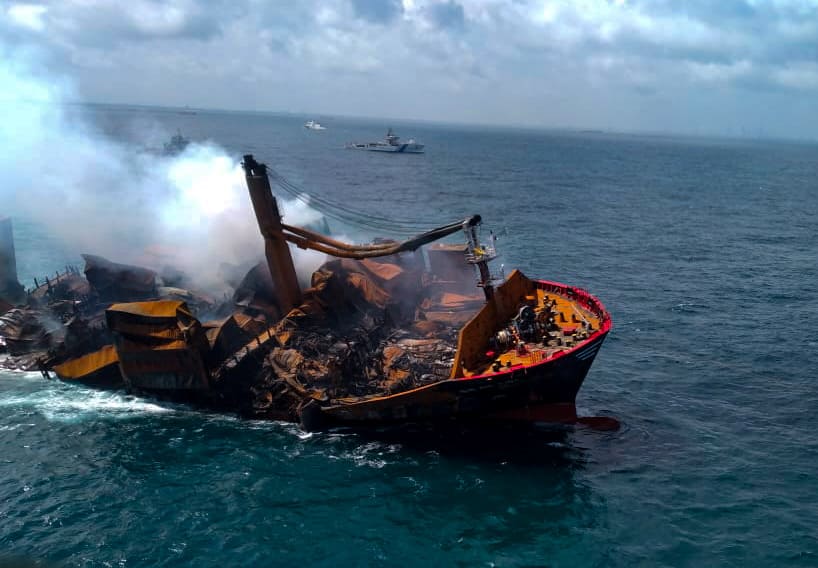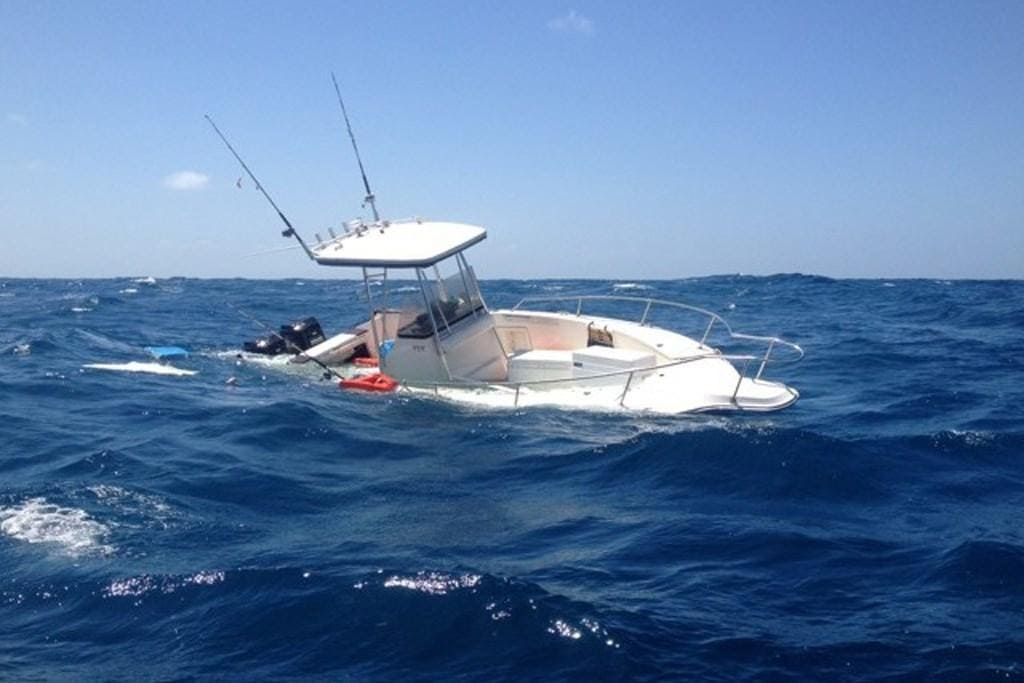Hello, there, my boaters and boat aficionados. How are your boating adventures going? I know that over the course of years, boating has experienced a shift due to advancements in technology, so there are fewer chances of your vessel taking on water and sinking. But what if, due to any unfortunate incident, such as huge icebergs, a wave of winds, or a hole in a boat due to human error, your boat starts sinking? To avoid such situations, you need some tips to prevent your boat from sinking for a fulfilling water experience amid the depths of the sea. This article is specially for the boaters who want a safe ride in the seas. Your sinking boat can still be afloat if you follow our article guide step by step and remain calm. So, without further ado, let’s get started.

Reasons for Sinking Boat: Unlocking the Reasons
Before getting on to the tips to prevent the sinking of your vessel, be it a sinking fish boat, pontoon boat, or any other, we need to dig out the potential reasons for that happening.
1. Mechanical Malfunctions May Lead to Sinking Boat
Mechanical problems such as hull breaches, engine malfunctions, or faulty bilge pumps frequently contribute to a vessel’s sinking.
2. Accidents and Collisions Can Cause Sinking Boat
Sometimes, A boat sinks as a result of running aground, colliding with other vessels, or being submerged by objects.
3. Environmental and Meteorological Conditions
Unfavorable weather conditions, such as cyclones, high winds, or rough seas, have the potential to induce capsize in a vessel, particularly if said vessel lacks the appropriate safety apparatus.
4. Overloading and Improper Loading can Result in a Sinking Boat
It is detrimental to the stability of a vessel and can ultimately result in its grounding if passengers or cargo are loaded in excess of its capacity. In the same way, an inadequate distribution of load may result in the capsize or inundation of a vessel.
5. Neglect and Lack of Maintenance
The absence of routine inspections to detect leaks, corrosion, or worn-out parts, which are essential for ensuring the structural integrity of a boat, can escalate the possibility of a sinking boat mishap.
6. Human Error Can Become Primary Reason for Sinking Boat
Critical system malfunctions, navigational errors, or piloting errors are all potential contributors to a sinking boat. For instance, neglecting to secure valves or close seacocks before reaching turbulent waters could result in water ingress.
7. Natural Disasters
Catastrophic damage to vessels, including the capsize of multiple cruise ships or vessels, can be inflicted by natural occurrences such as hurricanes, tornadoes, or tsunamis. This was tragically illustrated by an incident that occurred on Table Rock Lake near Hot Springs, Arkansas.
Understanding and minimizing these risks through suitable maintenance, instruction, and compliance with safety procedures are important in avoiding a situation involving a boat sinking.
While being on the subject of boats, here are some indoor boat storage ideas to protect your vessel from wear and tear.

Expert Tips to Deal with A Sinking Boat
Now that you know what can be the potential cause of your boat losing its balance and submerging deep in the waters posing a threat to your life; the next step is to deal with such a scenario. Whether you have a pontoon boat, duck boat, or fishing boat, we are here to help you in either case.
1: Evaluating the Failure Behind Sinking Boat
In the event of a crisis regarding a pontoon boat sinking or a sinking fishing boat, it is important to maintain composure and quickly assess the situation. Panicking has the potential to put at risk the lives of all individuals present and endanger the welfare. Nevertheless, by keeping a person calm, one can more precisely assess the scope of the issue at hand as well as possible resolutions. Additionally, maintaining a composed disposition promotes efficient correspondence with both passengers and crew, thereby facilitating synchronized attempts to resolve the emergency situation and guarantee the well-being of all individuals involved.
2: Altering Everyone Onboard About Sinking Boat
In an emergency, such as a pontoon boat sinking or a dream boat sinking, alerting everyone on board is essential. Quick action can save lives in a situation like this in the vicinity of Hot Springs, Arkansas. However, maintaining composure is essential for good conversation. Notify all passengers and crew members of the emergency as soon as possible, stressing that prompt action is required. Additionally, everyone should make sure that life jackets are put on right away. Additionally, assign particular responsibilities to people to maximize efficiency in handling the circumstance. You can increase the likelihood of a safer outcome and a coordinated reaction by promptly notifying everyone on board.
3: Find the Leak to Save Lives
Finding and fixing the leak as soon as possible is the most important thing to do in a dream sinking boat situation. A swift response is important, regardless of the type of vessel, a sinking duck boat or a larger ship like those used by cruise lines. Furthermore, to stop additional water ingress, the Coast Guard highlights how urgent this action is. It is possible to temporarily stop the flow of water by using readily available materials like rubber patches or wooden plugs. But the trick is to locate the leak’s exact location quickly enough under potentially chaotic circumstances.
4: Call For Help to Protect Everyone in Sinking Boat
If your cruise boat sinks, you need to call for help right away. To report a crisis, use a marine VHF radio channel, like Channel 16. Share the location of the boat and the gravity of the situation. Also, use visual distress signals to draw attention, such as smoke or flare signals. Moreover, given past incidents such as the catastrophic Stretch Duck mishap on Table Rock Lake, swift action is essential. Additionally, prompt communication increases the odds of an efficient rescue.
5: Stabilize the Sinking Boat
Weight distribution is key to stabilizing a sinking boat in Branson, Missouri, from capsizing. To counter drift, however, if the boat is listing, use drogues or sea anchors. To maintain its balance, the boat must be appropriately trimmed. Additionally, securing loose objects and wearing life jackets to ensure everyone’s safety can help with stabilizing operations. By being proactive, you can buy some time to solve the underlying problem that’s causing the boat to sink.
6: Leave the Sinking Boat if Necessary
It’s important to get ready to leave a sinking ship if attempts to stabilize the situation fail. However, compared to bigger boats like cruise ships, abandoning a pontoon boat has different difficulties. Pontoon sinking can happen quickly, leaving little time for rescue efforts. In addition, the lack of compartments or bulkheads facilitates rapid flooding of the entire vessel. besides, pontoon boats usually have less safety gear on board than larger ships, which highlights the significance of acting quickly and decisively.
7: Wait for Rescue
Staying together and awaiting rescue is imperative in the case of a sinking boat. This guarantees visibility and increases the chance of being seen by passing ships or search parties. However, in the confusion of a sinking ship, it can be difficult to stay composed and serene. Furthermore, solidarity promotes the effectiveness of rescue operations and offers assistance to those in similar circumstances. Aside from that, keeping a group guarantees that nobody gets lost.
However, if you want to know about other tips to stay afloat, read out this article.
Conclusion
Summing up, the article covered the sinking boat and how to prevent it if such a situation comes up. The boaters can efficiently handle the crisis if they follow the guide in the true sense. Moreover, it is important to check for any errors before getting on board to decrease the likelihood of any mishap.
Stay Afloat, Stay Prepared!

